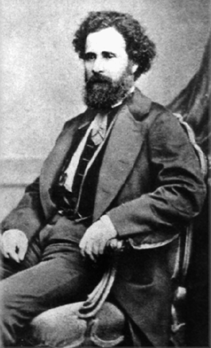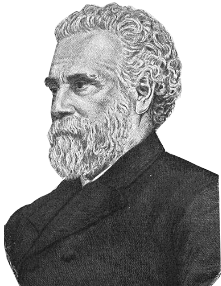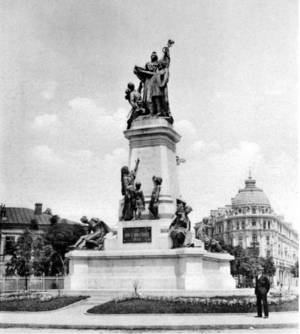Ion C. Brătianu facts for kids
Quick facts for kids
Ion C. Brătianu
|
|
|---|---|
 |
|
| Prime Minister of Romania | |
| In office July 24, 1876—April 9, 1881 June 9, 1881 – March 20, 1888 |
|
| Preceded by | Nicolae Golescu Manolache Costache Epureanu Dimitrie Brătianu |
| Succeeded by | Dimitrie Ghica Dimitrie Brătianu Theodor Rosetti |
| Personal details | |
| Born | June 2, 1821 Argeș County, Wallachia |
| Died | May 16, 1891 (aged 69) Kingdom of Romania |
| Political party | National Liberal Party |
Ion Constantin Brătianu (born June 2, 1821 – died May 16, 1891) was a very important political leader in Romania during the 1800s. He was the son of Dincă Brătianu and the younger brother of Dimitrie. He was also the father of three future prime ministers: Ionel, Dinu, and Vintilă Brătianu.
Contents
Biography
Early Life and Revolution
Ion C. Brătianu was born into a wealthy family of boyars (important landowners) in Pitești, a city in Wallachia. In 1838, he joined the Wallachian Army. By 1841, he went to Paris to study.
When he returned home, Brătianu joined his friend C. A. Rosetti and other young politicians in the 1848 Wallachian Revolution. During this revolution, he worked as a police chief in the temporary government.
However, the revolution did not last. Russian and Ottoman (Turkish) forces soon took control again. This forced Brătianu to leave the country. He went to Paris and tried to convince French leaders to support the idea of uniting the Romanian lands. In 1856, he returned to Wallachia.
Working for Romanian Unity
Brătianu strongly supported the idea of uniting Wallachia and Moldavia. These two regions later formed modern Romania. He was a member of a group called Partida Națională, which worked for this goal.
During the rule of Alexander Ioan Cuza (1859–1866), Brătianu helped create the National Liberal Party (PNL) in 1875. This party is still a major political group in Romania today.
Cuza wanted to make changes, like land reform, but many landowners (including Liberals and Conservatives) did not agree. They worked together to stop his laws. This led Cuza to rule more strictly. Brătianu was part of the group that removed Cuza from power in 1866.
After Cuza, Prince Carol of Hohenzollern-Sigmaringen became the new ruler. Brătianu served in several government roles under Prince Carol for the next four years.
Challenges and the Liberal Party
Brătianu's relationship with Prince Carol was sometimes difficult. Brătianu and some Liberals even thought about making Romania a republic (a country without a king). In 1870, a small group of Liberals tried to create a "Republic of Ploiești." Ion Brătianu was arrested because people thought he was behind it, but he was soon released.

In 1871, Liberals protested against the German Empire. This showed that the Liberal group needed to become a stronger, more organized party. In 1875, they officially formed the National Liberal Party. This new party supported protecting Romanian businesses and had strong views against Jewish Romanians. In 1876, Brătianu, with help from C. A. Rosetti, formed a Liberal government. This government stayed in power for a long time, until 1888. During this period, Brătianu and Prince Carol began to work better together.
Leading Romania
Brătianu's government worked to free Romania from being controlled by the Ottoman Empire. While some politicians worried about Austria-Hungary, Brătianu's Liberals focused on uniting Romanians.
In 1877, Brătianu allied Romania with Russia when the Russo-Turkish War began. This war is also known as the Romanian War of Independence. Romania gained its independence from the Ottomans. However, Russia took back a part of Romania called Southern Bessarabia. In return, Romania received Northern Dobruja.
After the war, the Congress of Berlin (a meeting of European powers) put pressure on Romania to change its laws. The government agreed to allow Jewish and Dobrujan Muslim people to apply for citizenship. However, Brătianu held strong anti-Semitic views. His government passed laws that were unfair to Jewish Romanians. One famous Jewish writer, Moses Gaster, was even forced to leave the country because of these policies.
In 1881, Romania officially became a Kingdom.
Brătianu's government brought many modern changes to Romania. These changes affected how the country was run, its schools, economy, and military. A big success came in 1883. The Liberals changed the Constitution. This change allowed more people to vote, including peasants and city workers. This helped the Liberals win many elections.
Brătianu was the main leader of the Liberal Party after 1883. He had a disagreement with Rosetti, who had been his friend and political partner for almost 40 years. Brătianu was in office for a very long time, which was unusual for Romania. This made him quite unpopular by the end of his term. There were even talks of trying to remove him from office. However, this did not happen because it would have also involved criticizing the King.
Other Activities
Besides being a leading politician, Brătianu also wrote several political books in French. Some of his famous writings include:
- Mémoire sur l'empire d'Autriche dans la question d'Orient (1855)
- Réflexions sur la situation (1856)
- Mémoire sur la situation de la Moldavie depuis le traité de Paris (1857)
- La Question religieuse en Roumanie (1866)
In Memoriam
Many places in Romania are named after Ion C. Brătianu to honor his memory. These include:
- The commune I. C. Brătianu in Tulcea County.
- The Ion C. Brătianu National College in Pitești.
- The I.C. Brătianu National College in Hațeg.
- The Ion C. Brătianu Boulevard in downtown Bucharest.
- I. C. Brătianu Plaza in Timișoara.
- A ship called Ion C. Brătianu (F-46), which is a Mihail Kogălniceanu-class river monitor.
See also
 In Spanish: Ion Brătianu (1821-1891) para niños
In Spanish: Ion Brătianu (1821-1891) para niños





